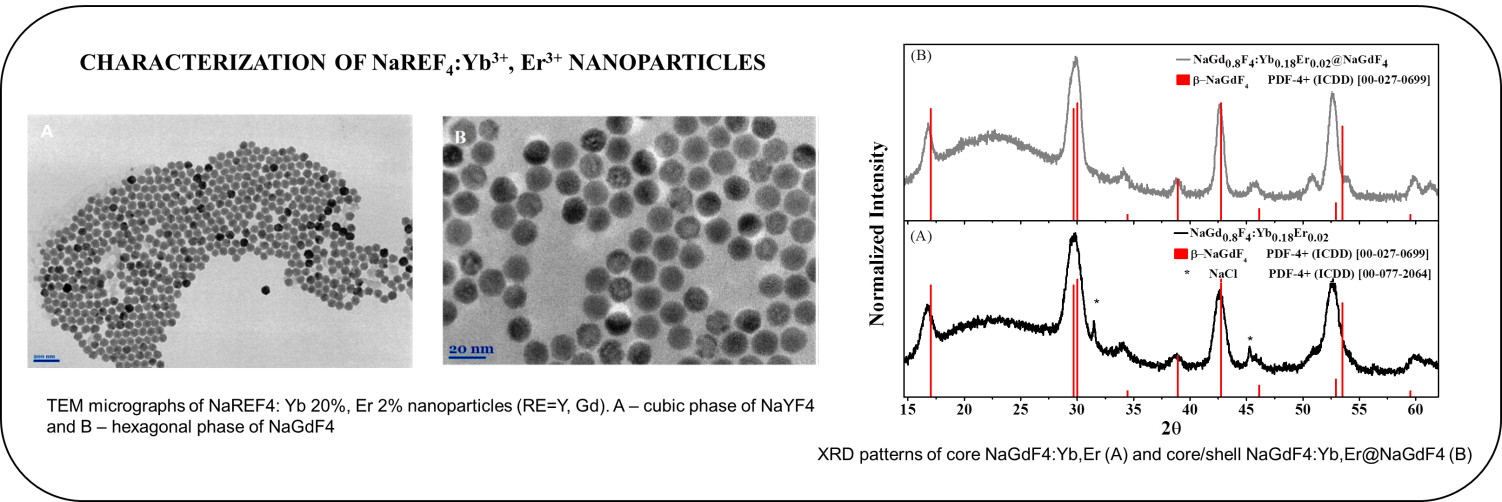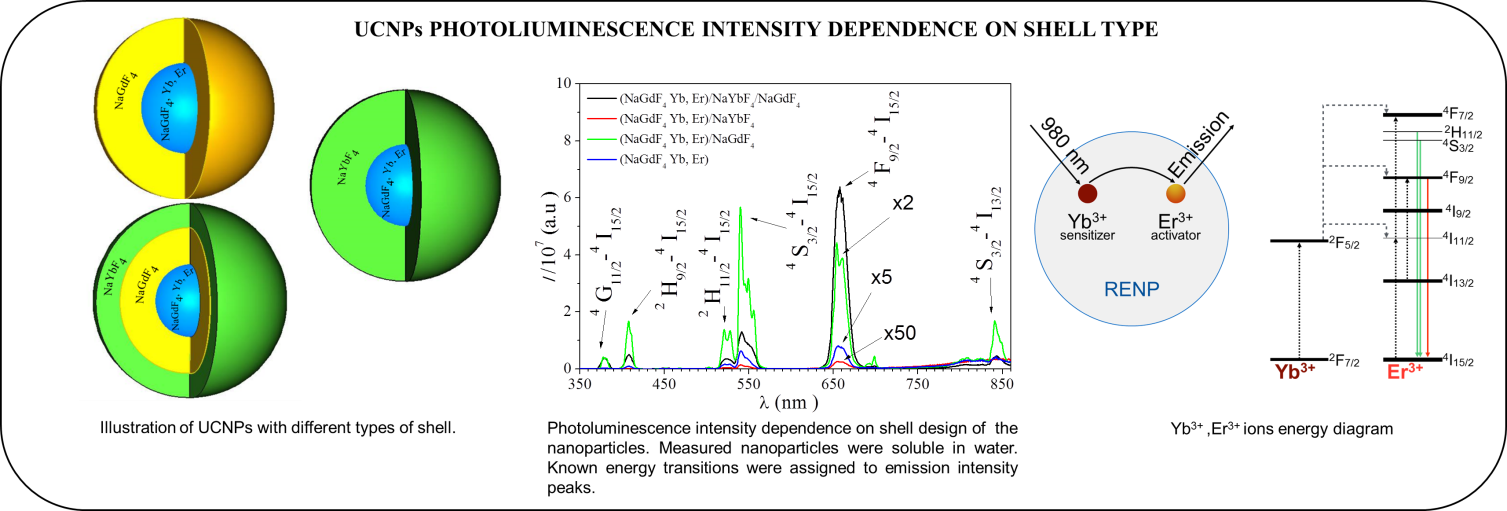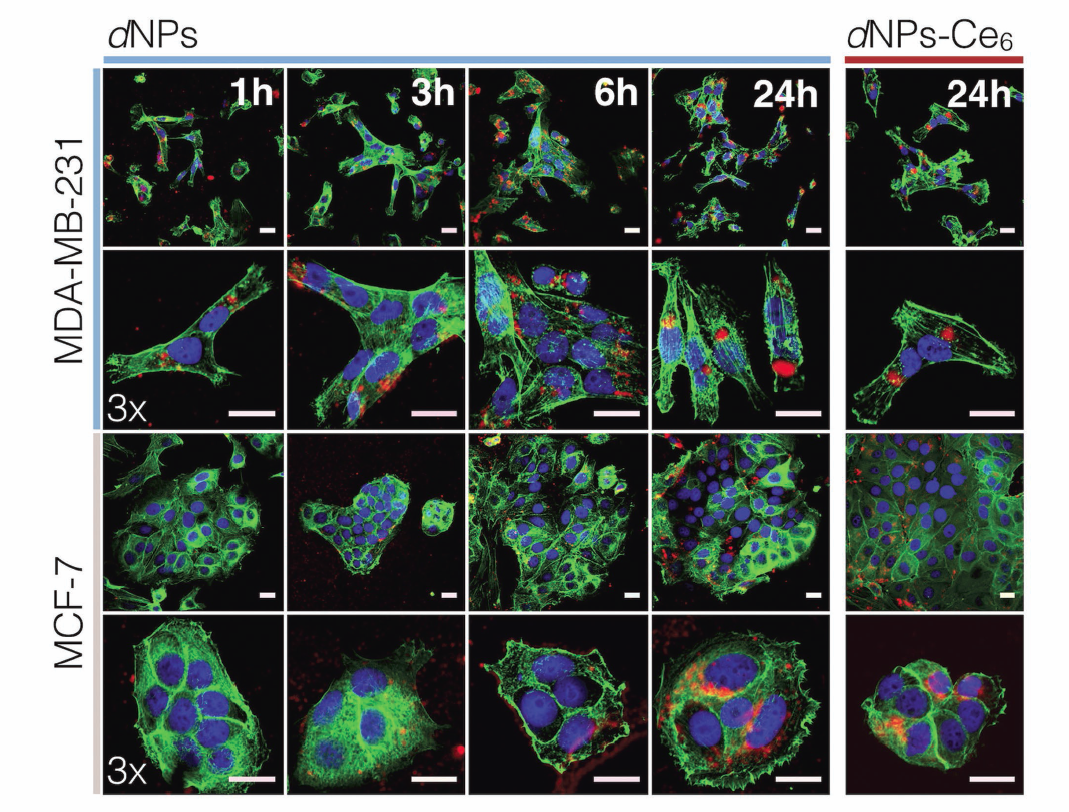- Home
- Research Departments
- Scientific departments
- Biomedical Physics Laboratory
- Upconverting nanomaterials
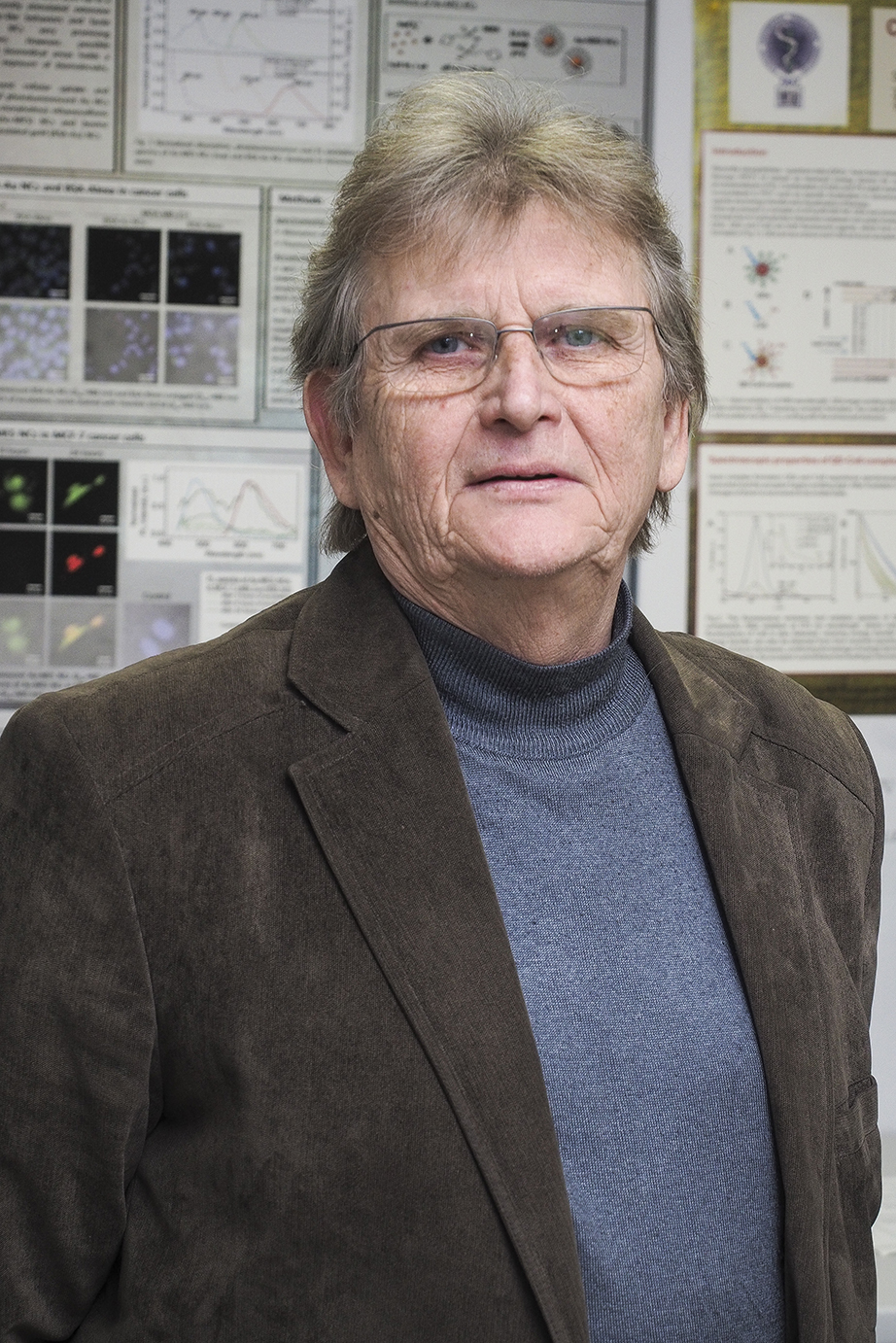
Head Prof. Ričardas Rotomskis, Ph.D.
Tel.: +370 5 219 0908;
Fax: +370 5 272 0164;
Email. ricardas.rotomskis![]() nvi.lt
nvi.lt
Upconverting nanomaterials
Multilayered upconverting nanoparticles as theranostic platform for in vivo imaging and targeted drug delivery
Our group seeks to improve cancer diagnostics and treatment through high-quality research dedicated to biomedical applicability of new type, upconverting nanoparticles (UCNPs). Multifunctional UCNPs being activatable with near infrared radiation will realize the idea/conception of integrating diagnostic imaging and cancer therapy into a single theranostic platform. Among different systems, the UCNPs represent the most versatile currently available light probes. Due to its special chemical-physical properties UCNPs can be applied in many fields such as bioimaging and drug delivery. UCNPs demonstrates many useful features such as narrow emission bands, large anti-Stokes shift, resistance to photobleaching, high chemical and physical stability, low chemical toxicity and long luminescence lifetimes. Upon the doping of different elements such as Gd and Sm into UCNPs structures, the prepared nanoparticles can also be endowed with more promising functions for multimodality imaging by the combination of fluorescent imaging with other imaging techniques including computed tomography (CT), magnetic resonance imaging (MRI) and positron emission tomography (PET).
Spatial,optical and magnetical properties of UCNPs
Confocal imaging of accumulation of nanoparticles in cells
Cellular internalization of dNPs and dNPs-Ce6. Confocal fluorescence microscopy images of MDA-MB-231 and MCF-7 cells after 1, 3, 6, and 24 h of incubation with dNPs and after 24 h of incubation with dNPs-Ce6 complex. UC signal (λex = 980 nm) is represented by the red color. Cell nuclei were stained with Hoechst (blue) (λex = 404 nm) and filamentous actin was stained with Phalloidin-Alexa 488 (green) (λex = 488 nm). Representative cell images are shown in a wide-field and 3× zoom view. Scale bars in all images correspond to 20 μm (Skripka et al., 2018).
Characterisation of nanoparticles: DLS and ζ potential measurements
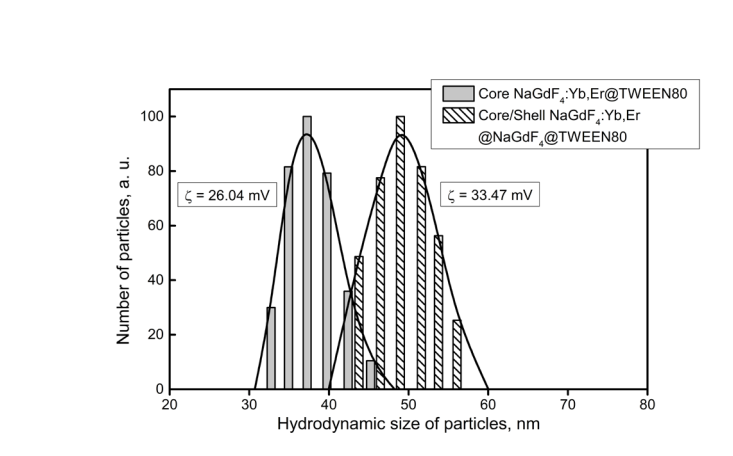
Hydrodinamic size distribution of core-only and core-shell upconverting nanoparticles and their zeta potential in the cell culture medium (Baziulyte-Paulaviciene et al., 2017)
Recent publications:
- Skripka A., Karabanovas V., Jarockytė G., Marin R., Tam V., Cerruti M., Rotomskis R., Vetrone F. Decoupling theranostics with rare earth doped nanoparticles. Advanced functional materials. 2019, 29(1), 1-12.
- Baziulyte-Paulaviciene D., Karabanovas V., Stasys M., Jarockyte G., Poderys V., Sakirzanovas S., Rotomskis R. Synthesis and functionalization of NaGdF4:Yb, Er@NaGdF4 core-shell nanoparticles for possible application as multimodal contrast agents. Beilstein Journal of Nanotechnology, 2017, 8, 1815-1824.
Projects:
- „Study of optical properties and biocompatibility of Na(Gd/Y)F4 nanoparticles“ (No.MIP-030/2014) from the Research Council of Lithuania
Collaboration:
- Prof. Fiorenzo Vetrone (INRS Varennes, Canada)
- Dr. Artur Bednarkiewicz (Wrocław Research Center EIT+ , Poland)
- Prof. Aldona Beganskiene (VU Faculty of Chemistry and Geosciences, Lithuania)
- Prof. Simas Sakirzanovas (VU Faculty of Chemistry and Geosciences, Lithuania)
Updated 2023-02-07 15:15
 Research Departments
Research Departments
 International cooperation
International cooperation
.png) Competence Center
Competence Center
